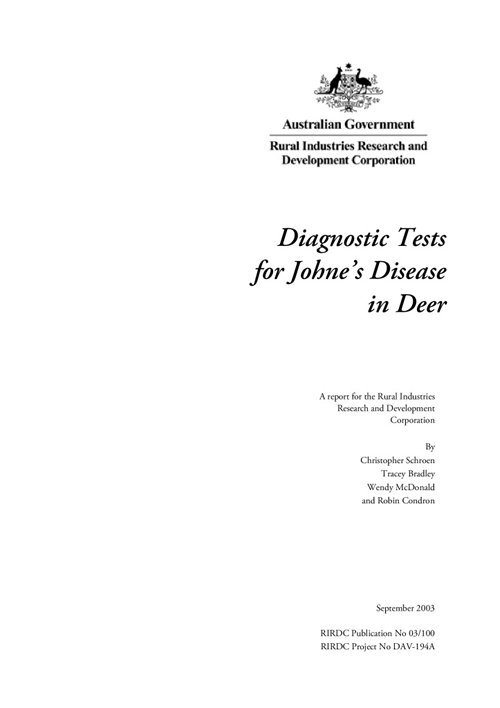Johne’s disease was initially detected in a Victorian dairy herd in 1925. Since then it has infected an estimated 20% of
Victorian dairy herds and during the 1980’s and 90’s has become established in sheep flocks in NSW and Victoria.
Johne’s disease is caused by an infection of the gut by Mycobacterium avium subsp paratuberculosis, all domestic and
many wild ruminant species are known to be susceptible. In 2000, deer with subclinical and clinical forms of Johne’s
disease were detected for the first time in Australia.
National programs for the control of bovine and ovine Johne’s disease have been established by the livestock industries
and animal health authorities. These programs established Standard Definitions and Rules in an attempt to reduce the
spread of the disease by zoning, providing market assurance programs and reducing the impact on farms by reducing the
prevalence of infection. These control strategies are dependent on effective diagnostic technology. Currently the
approved diagnostic test for Johne’s disease in live deer is individual faecal culture. In contrast, strategies for pooled
faecal culture have been developed and approved for flock diagnosis in sheep and the ELISA is used extensively in
cattle.
This research project developed and evaluated a modified commercial ELISA and pooled faecal culture for the detection
of Mycobacterium avium subsp paratuberculosis infection in deer. The report details the experimental development of
the tests, the performance of the tests in infected and non-infected deer herds and discusses the application of the tests for
detection of disease in individual animals, detection of infected herds and for market assurance program applications.
Benefits from the project are directed towards increased productivity and Johne’s disease control strategies concurrent
with other industries.





